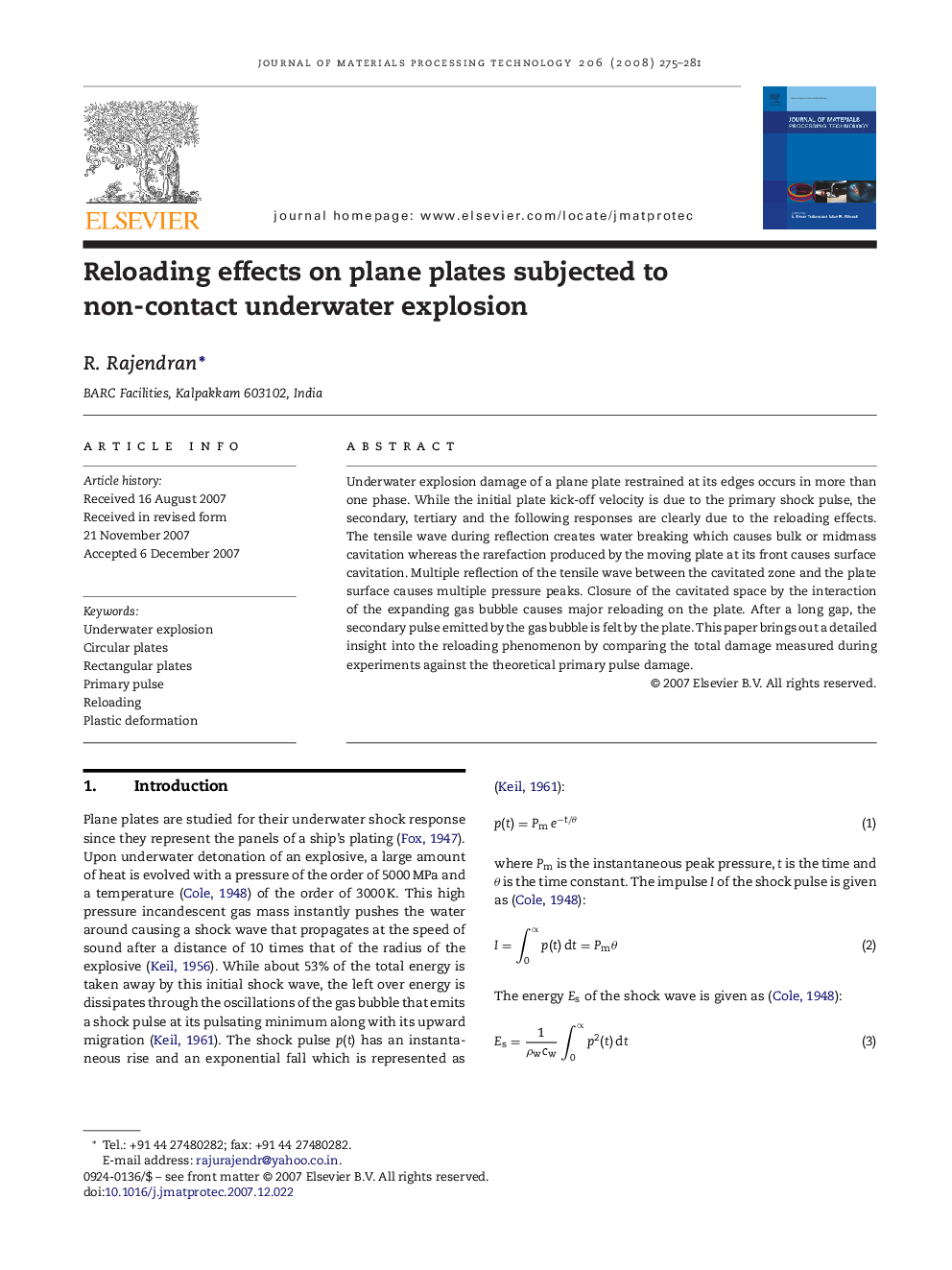| Article ID | Journal | Published Year | Pages | File Type |
|---|---|---|---|---|
| 791669 | Journal of Materials Processing Technology | 2008 | 7 Pages |
Underwater explosion damage of a plane plate restrained at its edges occurs in more than one phase. While the initial plate kick-off velocity is due to the primary shock pulse, the secondary, tertiary and the following responses are clearly due to the reloading effects. The tensile wave during reflection creates water breaking which causes bulk or midmass cavitation whereas the rarefaction produced by the moving plate at its front causes surface cavitation. Multiple reflection of the tensile wave between the cavitated zone and the plate surface causes multiple pressure peaks. Closure of the cavitated space by the interaction of the expanding gas bubble causes major reloading on the plate. After a long gap, the secondary pulse emitted by the gas bubble is felt by the plate. This paper brings out a detailed insight into the reloading phenomenon by comparing the total damage measured during experiments against the theoretical primary pulse damage.
